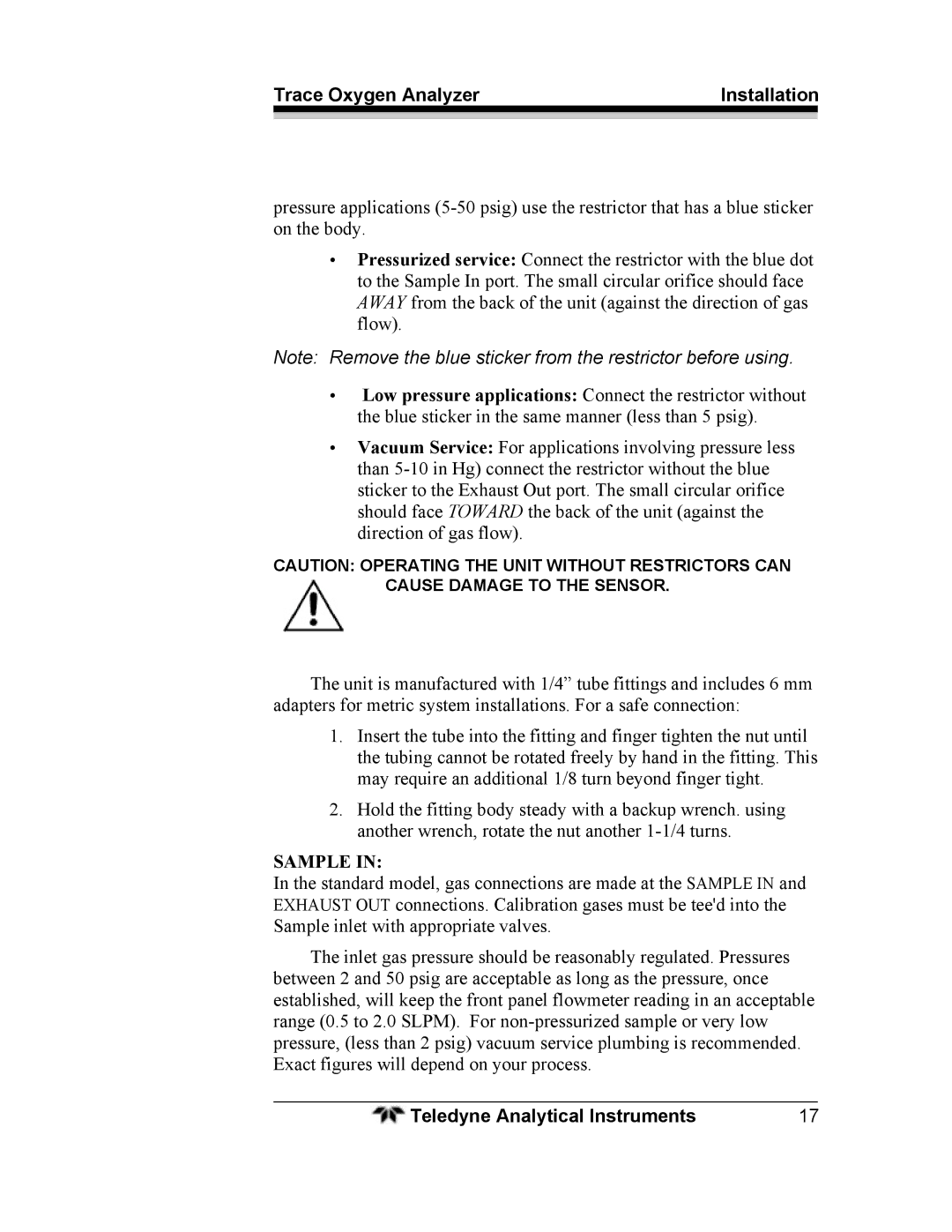
Trace Oxygen Analyzer | Installation | |
|
|
|
pressure applications
•Pressurized service: Connect the restrictor with the blue dot to the Sample In port. The small circular orifice should face AWAY from the back of the unit (against the direction of gas flow).
Note: Remove the blue sticker from the restrictor before using.
•Low pressure applications: Connect the restrictor without the blue sticker in the same manner (less than 5 psig).
•Vacuum Service: For applications involving pressure less than
CAUTION: OPERATING THE UNIT WITHOUT RESTRICTORS CAN
CAUSE DAMAGE TO THE SENSOR.
The unit is manufactured with 1/4” tube fittings and includes 6 mm adapters for metric system installations. For a safe connection:
1.Insert the tube into the fitting and finger tighten the nut until the tubing cannot be rotated freely by hand in the fitting. This may require an additional 1/8 turn beyond finger tight.
2.Hold the fitting body steady with a backup wrench. using another wrench, rotate the nut another
SAMPLE IN:
In the standard model, gas connections are made at the SAMPLE IN and EXHAUST OUT connections. Calibration gases must be tee'd into the Sample inlet with appropriate valves.
The inlet gas pressure should be reasonably regulated. Pressures between 2 and 50 psig are acceptable as long as the pressure, once established, will keep the front panel flowmeter reading in an acceptable range (0.5 to 2.0 SLPM). For
Teledyne Analytical Instruments | 17 |
